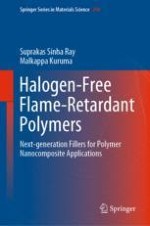2020 | OriginalPaper | Buchkapitel
5. Flame-Retardant Polyurethanes
verfasst von : Suprakas Sinha Ray, Malkappa Kuruma
Erschienen in: Halogen-Free Flame-Retardant Polymers
Aktivieren Sie unsere intelligente Suche, um passende Fachinhalte oder Patente zu finden.
Wählen Sie Textabschnitte aus um mit Künstlicher Intelligenz passenden Patente zu finden. powered by
Markieren Sie Textabschnitte, um KI-gestützt weitere passende Inhalte zu finden. powered by
